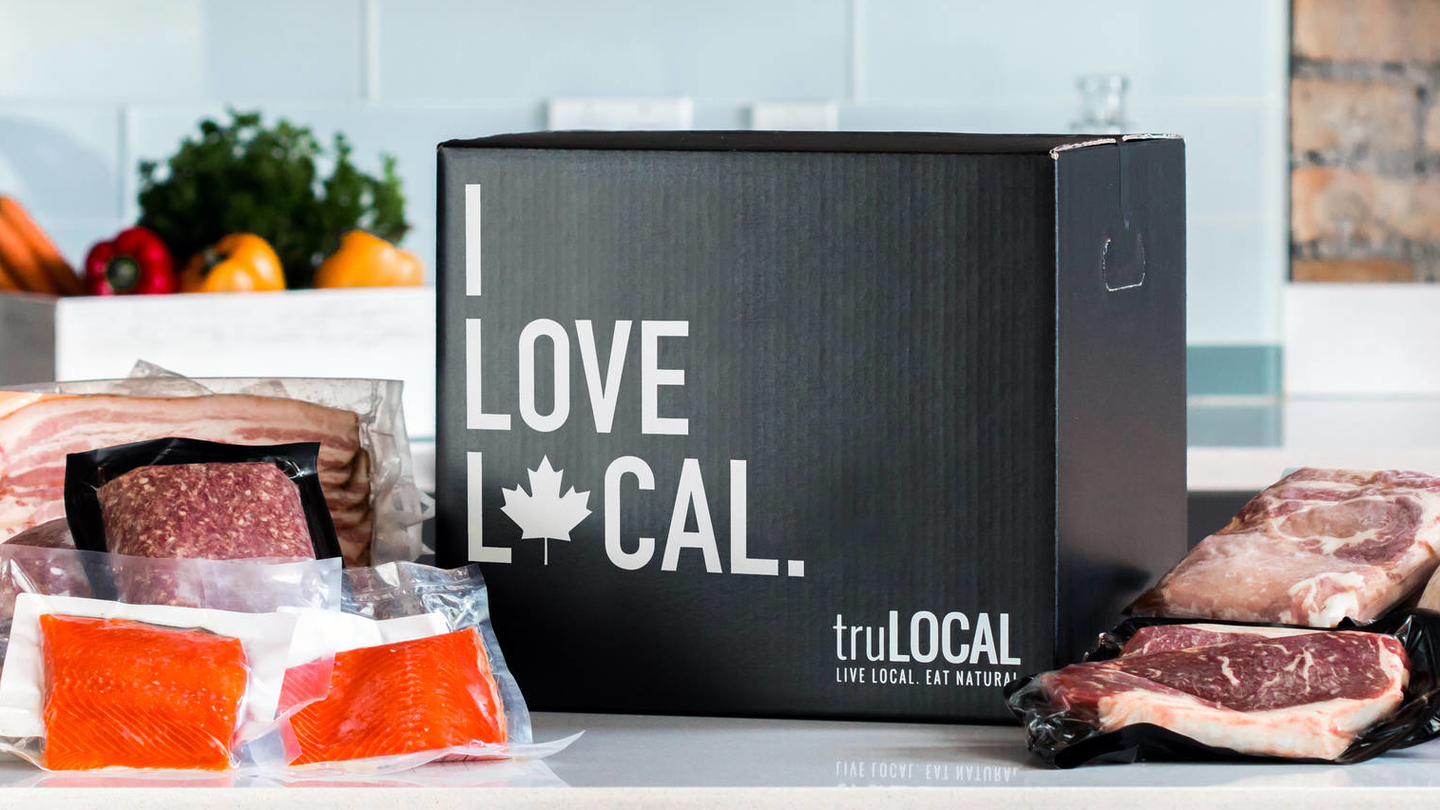
Headquartered outside of Toronto, truLOCAL was founded in 2016 as a monthly subscription platform for meat and food delivery that’s uniquely tied to independent local farms, butchers, and clean-meat processors. At its core, it’s a platform for a business like an organic farm or a neighborhood butcher shop to go Direct to Consumer (D2C)—something increasingly valuable when the pandemic has consumers nervous about stepping inside a supermarket.
Recently, truLOCAL ’s growth has exploded, with business already expanded to four locations in both the U.S. and Canada when we spoke with founder Marc LaFleur in December of 2020. And as of Dec. 31, the company was acquired to the tune of nearly $17 million by EMERGE Commerce Ltd., an acquirer and operator of niche e-commerce brands. And while the company story is an interesting one, the packaging went through a transformation of its own that’s worth noting.
Packaging transformation
As attractive as e-comm and D2C might be, consumers see them as sources of excess packaging waste. Leadership at truLOCAL had to address that perception.
As a cold-chain shipper of perishable meat, the company initially was using unrecyclable expanded polystyrene (EPS) for thermal protection during transit. Customers indicated that they didn’t like that the containers couldn’t be recycled; it defeated one of the purposes of shopping local to begin with.
“Like a lot of startups, [packaging] was the furthest thing from our mind when we started. The path of least resistance was what was already an accepted cold chain food delivery—EPS boxes. That was sort of an industry standard,” LaFleur says. “It wasn’t until we started getting that customer feedback and saw it for ourselves in our warehouses and seeing these stacks and stacks of EPS, that it really became front-of-mind.”
So truLOCAL set out to replace the coolers with a sustainable alternative that still protects shipments and maintains freshness. After all, the founders always wanted to be a business that did good, something accomplished by connecting consumers to these more boutique and niche producers by delivering value-added meat products. “But our packaging wasn't lining up with that,” LaFleur says. “So that's where we started realizing that we need to make a change.”
The company entered a year’s worth of testing, using the latest cooler materials running the gamut from lint-filled bags to corn-based insulators, even a few lowly crumpled-paper solutions (which LaFleur initially dismissed out of hand). The company needed a thermal solution to be flexible enough to handle their wide range of products, yet protective enough to maintain proper temperature range during transit—the success metric was 48 hours of rock-solid frozen product using dry ice.
Following an in-depth internal analysis of a multitude of different solutions, truLOCAL chose Ranpak WrapPak Protector, a paper-based thermal insulation solution for use with dry ice or gel packs. “Protector cross-pads have been transformative products for us,” says Lafleur. “Their flexibility and performance made it an easy choice to replace our unsustainable, bulky Styrofoam coolers.” But LaFleur took some convincing.
“It wasn't until we had one of the guys come down from Ranpak and do the whole demo that I started to come around to the paper solution. I still wasn't sold. And it wasn't until we tested it side-by-side with the other solutions that I started to come around. It was the only thing we used that actually kept product refrigerated and frozen the way that we needed it. And I must've given it more tests than any of the other options because I still wouldn't believe it. Eventually after just testing it a million different ways, it was the thing that beat everything out and we haven't looked back since.”
The Ranpak system includes the semi-automatic WrapPak Protector. This rollstock-fed Kraft paper converting system creates waved paper pads at programmable sizes and increments. For fulfillment centers interested in box lining, the wide paper pads produced on the system can cover an entire box surface with just one insert. Wrapping, blocking-and-bracing, and interleaving are possible with the pads, and with a double layer as is used in the truLOCAL application, the air trapped in the waved Kraft paper provides sufficient thermal insulation for dry ice for 48 hours.
According to Ranpak, the features listed above mean the WrapPak Protector unit can replace a wide range of existing packaging materials that truLOCAL used to require, including corrugated shippers, dunnage, aluminum-coated plastics, tapes, and inserts. The WrapPak Protector converter is also highly programmable to match evolving needs, and it’s small enough to use at a pack table, either in-line or as a standalone unit.
The small piece of machinery was easily integrated into truLOCAL’s facility as it freed up nearly 50 sq m (520 sq ft) of space, previously dedicated to EPS packout, for more pack lines. But not only did Ranpak help with the storage space, it also made the packaging process easier and reduced the time needed to package boxes thanks to the on-demand delivery of the pads.
The response from customers has been equally positive, according to LaFleur. Social media posts feature customers embracing the experience of opening their truLOCAL boxes to enjoy their products wrapped beautifully and safely in Ranpak Protector pads. Consumers appreciate that the all-paper replacement solution is 100% curbside recyclable.
“People understand paper,” he adds. “Not only did Ranpak improve the unboxing experience for our customers, but we now spend less time packing our boxes. The on-demand delivery of the pads from the Protector makes the process so quick and easy. The simplicity of the paper is beautiful.”






